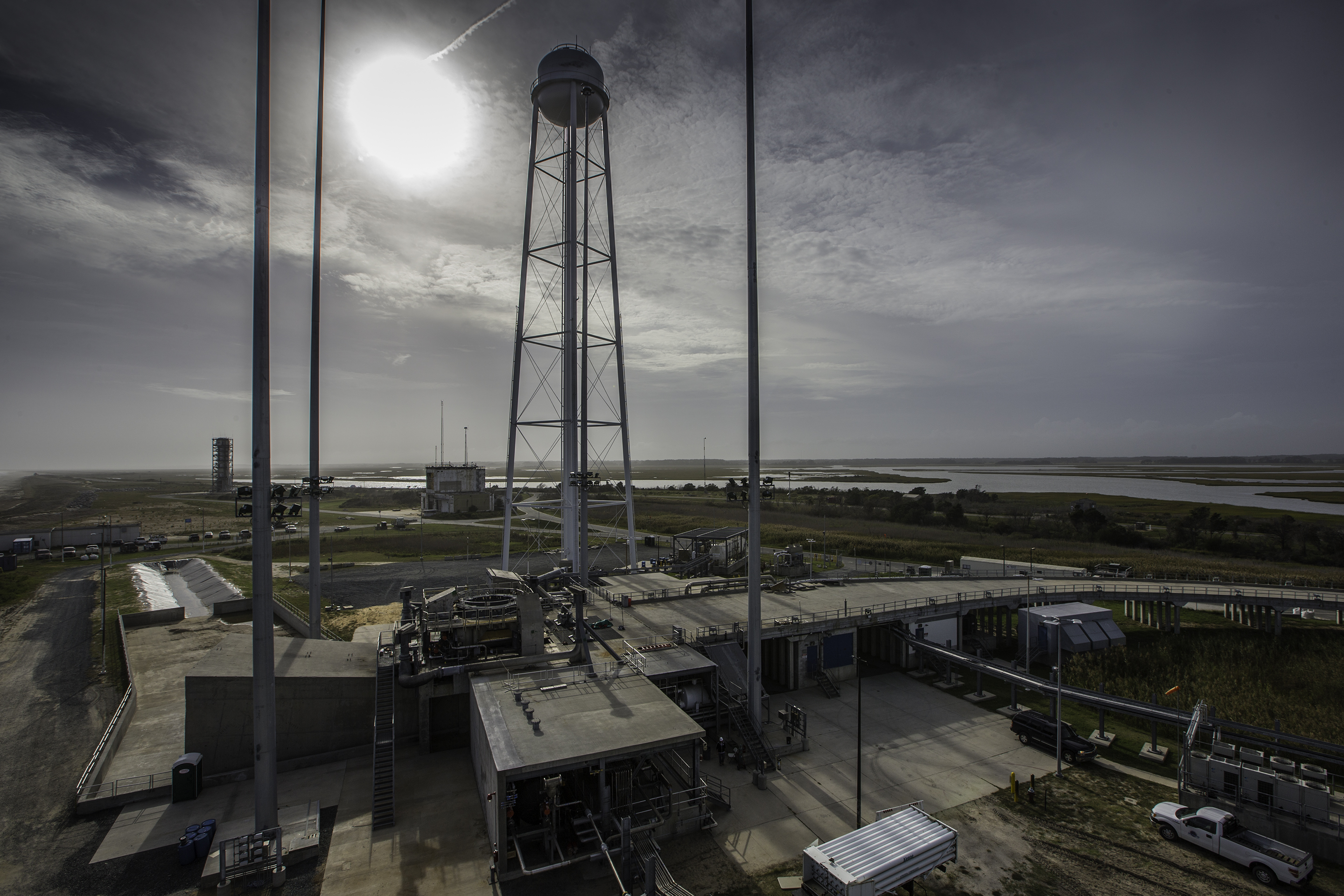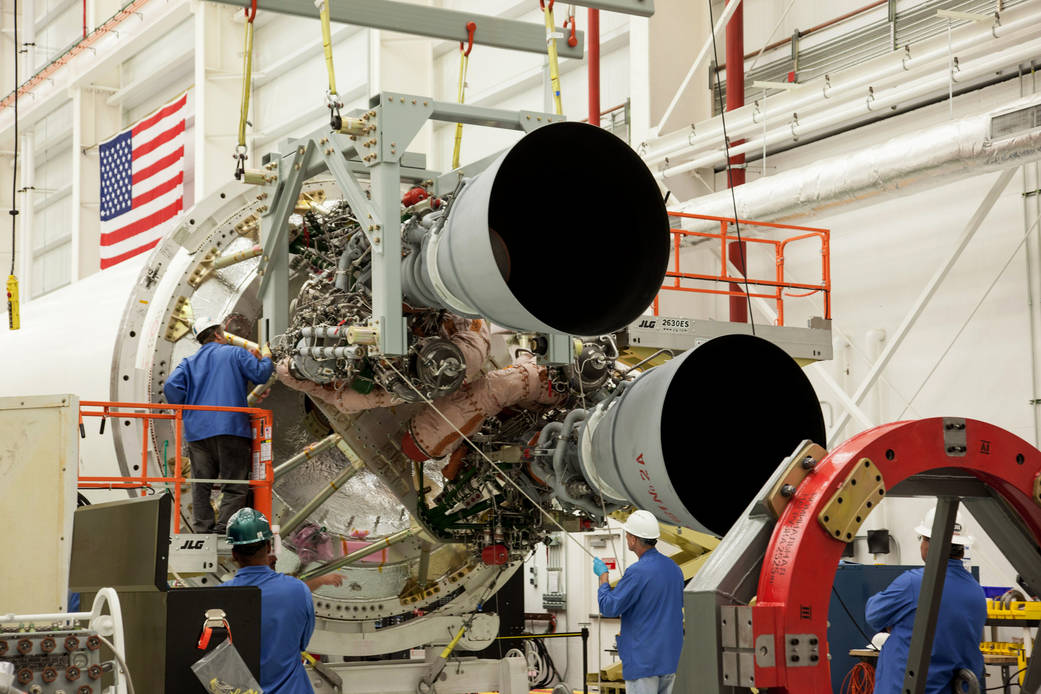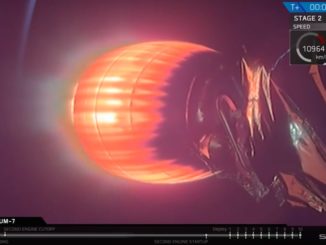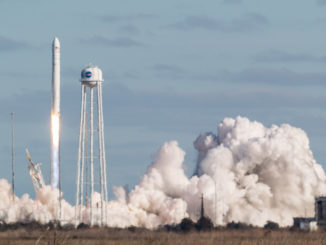
Repair crews in Virginia have restored the Antares booster’s launch pad — damaged in an explosive rocket crash nearly one year ago — to flight-ready status as the Orbital ATK launcher moves toward a return-to-flight in 2016.
The Virginia Commercial Space Flight Authority, a Virginia government agency which owns pad 0A at the Mid-Atlantic Regional Spaceport, announced the repair milestone in a press release Sept. 30.
The launch caused $15.2 million in damage to the Antares launch pad, a fee equally shared by NASA, Orbital ATK and the Virginia Commercial Space Flight Authority after months of discord over who was responsible for pay for repairs.
Another $1 million in damage to NASA buildings near the launch pad was paid by an insurance policy obtained by Orbital ATK before the rocket failure, which destroyed a Cygnus supply ship bound for the International Space Station on Oct. 28, 2014.
Orbital was required to purchase insurance under its FAA launch license to cover damage to federal property.
The Mid-Atlantic Regional Spaceport lies on a beach owned by NASA’s Wallops Flight Facility on Virginia’s Eastern Shore. Although NASA contends the Virginia Commercial Space Flight Authority should have purchased insurance to cover the repairs, the parties — NASA, VCSFA and Orbital ATK — announced in August an agreement to divide the costs of the restoring the pad to flight status three ways.
According to a report by NASA’s inspector general, the space agency diverted $5 million from other space operations projects to pay its share of the repair costs, despite what the watchdog said were clear legal requirements that the Virginia space authority would bear financial responsibility for such damage.
“As NASA continues to rely on commercial companies to provide cargo, and soon crew, transportation services to the ISS, it is important to ensure all parties comply with procedures regarding obtaining (or waiving) insurance and clarifying who pays for what in the event of a mishap,” the inspector general’s report said.

Orbital ATK signed a $1.9 billion contract with NASA in 2008 for eight resupply missions to the International Space Station with its Antares and Cygnus vehicles. NASA has since added missions to the deal, which now has provisions for 10 flights, including the failed launch last year.
The space agency has not disclosed the financial value of the added missions.
The launch pad work included repairs of the facility’s water deluge system, heating and air conditioning, fire alarms, electrical systems, controls and kerosene and liquid oxygen fueling equipment. Crews also upgraded the launch pad’s hydraulic system to lift the Antares rocket upright on the launch mount before future missions, which will use newly-built engines to replace the decades-old AJ26 powerplants Orbital ATK blames for the failure.
Workers also erected two new lightning protection masts to replace structures destroyed in the launch failure.
The work was completed on budget and on time, and the launch pad will now undergo final performance testing, the Virginia Commercial Space Flight Authority said in a statement.
Orbital ATK terminated its contract with Aerojet Rocketdyne, the subcontractor responsible for supplying Russian-made AJ26 engines for the Antares rocket, in the wake of the Oct. 28 mishap. Aerojet Rocketdyne announced Sept. 24 it would pay $50 million to Orbital ATK to settle a dispute over the contract termination.
The engine supplier said the $50 million would be covered by insurance, and Aerojet Rocketdyne planned to take ownership of 10 AJ26 engines intended for use on the Antares booster’s first stage, which flew with two engines on each mission.
The AJ26 engines are being stored at Aerojet Rocketdyne’s engine plant at NASA’s Stennis Space Center in Mississippi.
Orbital ATK accelerated an already-planned replacement of the AJ26 engine on the Antares after the failure, selecting all-new Russian RD-181 engines to power future Antares missions.
The RD-181 engine burns the same liquid oxygen/kerosene propellant mix as the AJ26, minimizing changes to the rocket’s first stage tanks, which are already built. Engineers are preparing for a hotfire test of the Antares booster at the Wallops launch pad late this year or early next year.
Email the author.
Follow Stephen Clark on Twitter: @StephenClark1.



